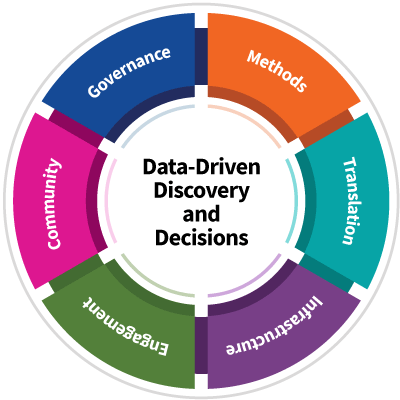Data Management
NTP is committed to making data from its research available to the public. Many of our data and resources are accessible via the web and at no cost, including:
- Chemical Effects in Biological Systems (CEBS), a public resource that houses data on studies of environmental substances
- Integrated Chemical Environment (ICE), a resource which contains data formatted for use in computational workflows
- Other resources are listed on our Data & Resources page
We also host educational activities devoted to data and informatics, such as the Systematic Evaluation of the Application of Zebrafish in Toxicology (SEAZIT) webinar series, among others.
Data management falls under the purview of data science, a field that is expanding rapidly. At NTP and NIEHS, data science seeks to achieve the following goals:
Governance. Managing data entails a balance between the need of scientists to advance their research programs, the need of the broader community to share data, the need of institutions to meet regulatory requirements, and the rights of research participants.
Methods. We engage with groups in academia and industry that are on the forefront of developing new data solutions. Clearly articulating our needs helps ensure that new methods will be adaptable to our purposes.
Translation. Novel methods have the potential for accelerating data-driven environmental health research. We seek to identify new methods and technologies and translate them into best practices for NTP researchers.
Infrastructure. We aspire to increase the research community's access to high quality, well-described data, and to ensure that NTP-generated data meets FAIR+ principles and is managed in accordance with our governance policies.
Engagement. A well-defined process is essential for communicating existing policies and best practices in data and knowledge management, as well as receiving feedback to ensure that the needs of NTP researchers are being met.
Community. Our researchers need specialized knowledge and skills to make the most of the data they generate. This goal can best be realized by nurturing a data-oriented workforce within the environmental health community.


